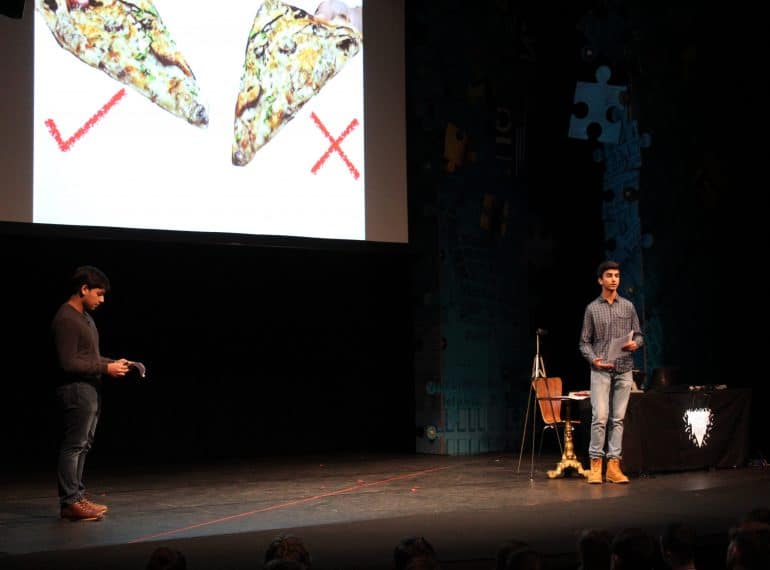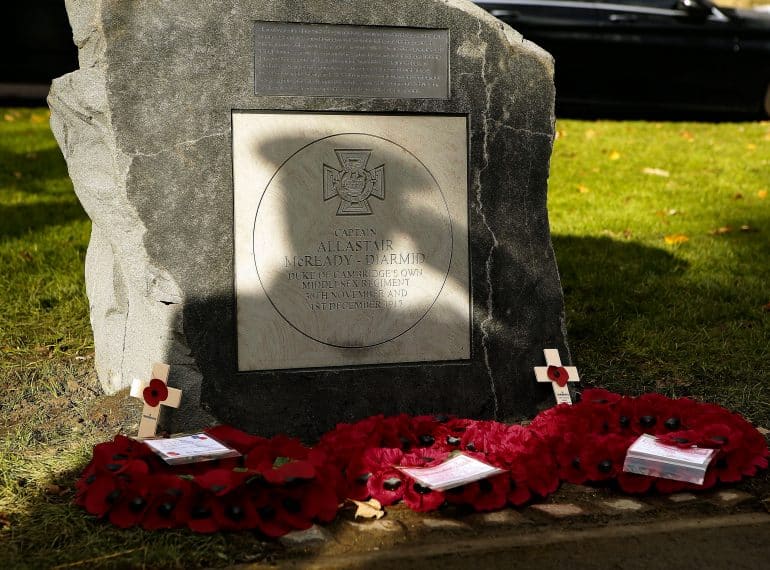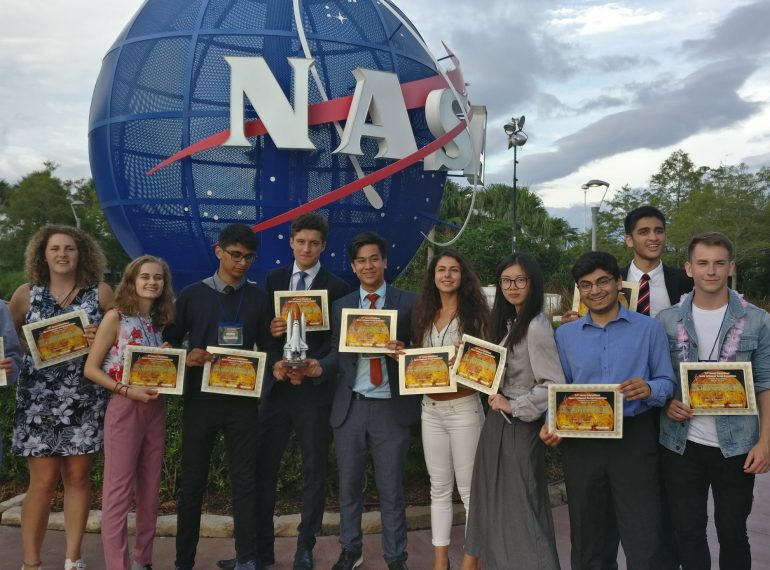
Sixth Form mathematicians saw a genuine Enigma machine at work at Maths Fest 2018, where the wartime device was the star of the show.
Thirty-eight Year 12 mathematicians attended the event at the Piccadilly Theatre in the West End and saw the demonstration of encoding and decoding. Another memorable moment came when one of the speakers burst into song!
Now in its third year, Maths Fest 2018 was set up by long-established Mathematics speakers, Matt Parker and Rob Eastaway, who “thought it was time there was a Maths festival for schools run entirely by passionate mathematicians”.
The first speaker, James Grimes, who is part of the Millennium Mathematics Project at the University of Cambridge, spoke about codes and ciphers and about the importance of cracking codes throughout history, from Julius Caesar to internet security, with the Enigma machine providing an exciting climax to his presentation.
Aoife Hunt, an industrial modelling expert, demonstrated how she uses statistics and crowd-flow models to make sure large venues are safe. She showed how three particular graphs (reciprocal, quadratic and ‘normal’) are vital in her work.
Ben Sparks from the Further Maths Support Programme at the University of Bath gave an insight into spirals and circular motion inspired by the 1968 Michel Legrand song Windmills of Your Mind.
Round, like a circle in a spiral
Like a wheel within a wheel
Never ending or beginning
On an ever-spinning reel
Mathematics teacher Phil Brady, who accompanied the boys to the event said: “He ended his session by singing for us – a real treat. The festival, which was hosted by Matt Parker in his usual witty manner, was both impressive and great fun.”
The event also featured Maths Slam, an opportunity for some of the students to go on to the stage to talk for three minutes about an interesting aspect of maths. QE boys Binu Perera and Uday Kataria gave a presentation on ‘How to hold a pizza’.
“Apart from the various talks scheduled for the day, Maths fest was a fantastic opportunity for us to speak about an interesting mathematical idea in front of over a thousand Year 12 students,” said Binu. “We decided to talk about Gauss’s theorema egregium because, whilst being fun to both present and research, it is an understated, yet simple, mathematical concept that is fundamental to our everyday lives,” added Uday.
Seb Lee-Delisle, a creative coder who works on large-scale installations, described how to transform a simple animated point into an impressive multicoloured firework display and showed how this was the basis of his professional laser displays.
The show was closed by Hannah Fry, a senior lecturer in the Mathematics of Cities at the Centre for Advanced Spatial Analysis at UCL. She demonstrated how to generate random (and not-so-random) numbers to produce a four-digit winning lottery number. Mr Brady’s ticket was just four away from being a winner!


